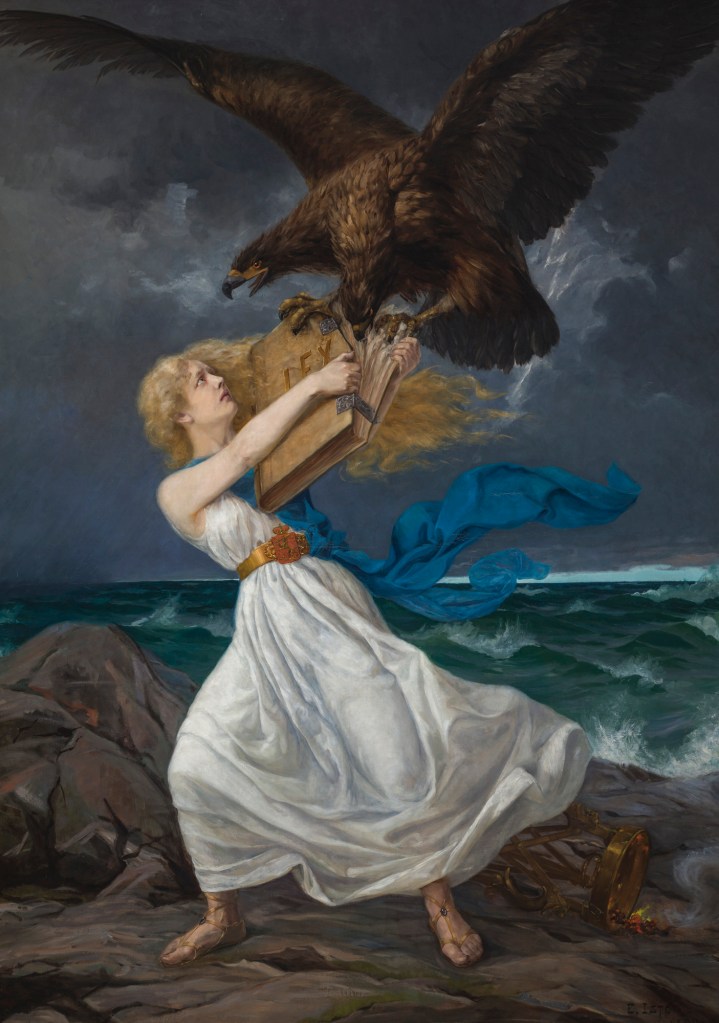Reviewed by John Daly-Peoples

Other Worlds
Auckland Philharmonia
Auckland Town Hall
March 28
Reviewed by John Daly-Peoples
It’s easy to appreciate why Sibelius’s Symphony No 2 has been seen as a programmatic work conveying idea about patriotism and nationalism. At the time of writing the symphony the Russian occupiers were restricting the use of the Finnish language and attempting to change the nature of Finnish society.
So, with this symphony, while the Finnish language was being stifled Sibelius was allowing the Finnish voice to be heard through music which reflected on Finnish language, landscape and history.
He attempted to convey in music what the painting, ”The Attack” by the Finnish artist Edward Isto did visually. Painted at the same time it illustrated the feelings of many Finns. The work depicts a double headed eagle, representing the Russian state, attempting to snatch a book of laws from a while clad female.

The opening movement with its stirring blasts of the woodwinds and horns followed by the surging strings provided musical images of landscape which conveyed ideas of Finnish Nationalism. Later when the vigorously plucked cellos contrasted with the deep sounds of the bassoons there a sense of personal loneliness or struggle.
The notion of the individual alone in the landscape and awe at their surroundings which is present throughout the work was also apparent in the opening work on the programme, Mendelssohn’s “Hebrides Overture” which also linked landscape, history and myth.
Later the militaristic sounds of a rampant orchestra ended with a triumphant anthem all this sounding like a great storm and its aftermath.
The work was by turns nostalgic, revolutionary and celebratory with repeated themes evoking a call to arms and a new dawn.
The newest work on the programme saw a trio of South Korean artists on stage with violinist Inmo Yang playing Unsuk Chin’s 2001 work “Violin Concerto No 1“ and the orchestra conducted by Shuiyeon Sung.

Unsuk Chin’s Violin Concerto is one of her most famous works and has won a number of awards and is fine example of cross-cultural music where the experimental and the traditional are fused.
Inmo Yang backed by a percussion rich orchestra – marimba, gongs, harps, bells and xylophone gave an extraordinary performance.
From the first bars of the first movement with his rapid bowing, he attempted to dominate the orchestra in what seemed at times like a competition.
His almost dementated, playing and the abstract sequences he produced contrasted with the more controlled playing of the orchestra with many of the sequences sounding as though Yang and the orchestra were responding to different musical scores.
His high-pitched sounds worked well with the percussion instruments producing otherworldly feelings and soft disturbing moments. There were also random moments of intimacy as well as magical sounds full of exuberant colour as he joined with and riffed off the various percussion instruments.
In the final movement his dexterous playing set the stage for a battle between violin and orchestra where their sounds would combine and then separate with a massive sonic, Doppler Effect.
Chin’s violin concerto requires a player who has focus, exceptional technical skills and understanding of the work. Inmo Yang possessed all those qualities.
Future APO concerts
April 11th
Viennese Feast
Conductor Christoph Altstaedt
Violin Amalia Hall
Brahms Variations on a Theme by Haydn
Haydn Violin Concerto No.1
Mahler (arr. Britten) What the Wild Flowers Tell Me
Schubert Symphony No.6 ‘Little C major’
May 2
Bach & Bruckner
Conductor Johannes Fritzsch
Piano David Fray
J.S. Bach Keyboard Concerto No.5, BWV 1056
J.S. Bach Keyboard Concerto No.4, BWV 1055
Bruckner Symphony No.9
To subscribe or follow New Zealand Arts Review site – www.nzartsreview.org.
The “Follow button” at the bottom right will appear and clicking on that button will allow you to follow that blog and all future posts will arrive on your email.
Or go to https://nzartsreview.org/blog/, Scroll down and click “Subscribe”
